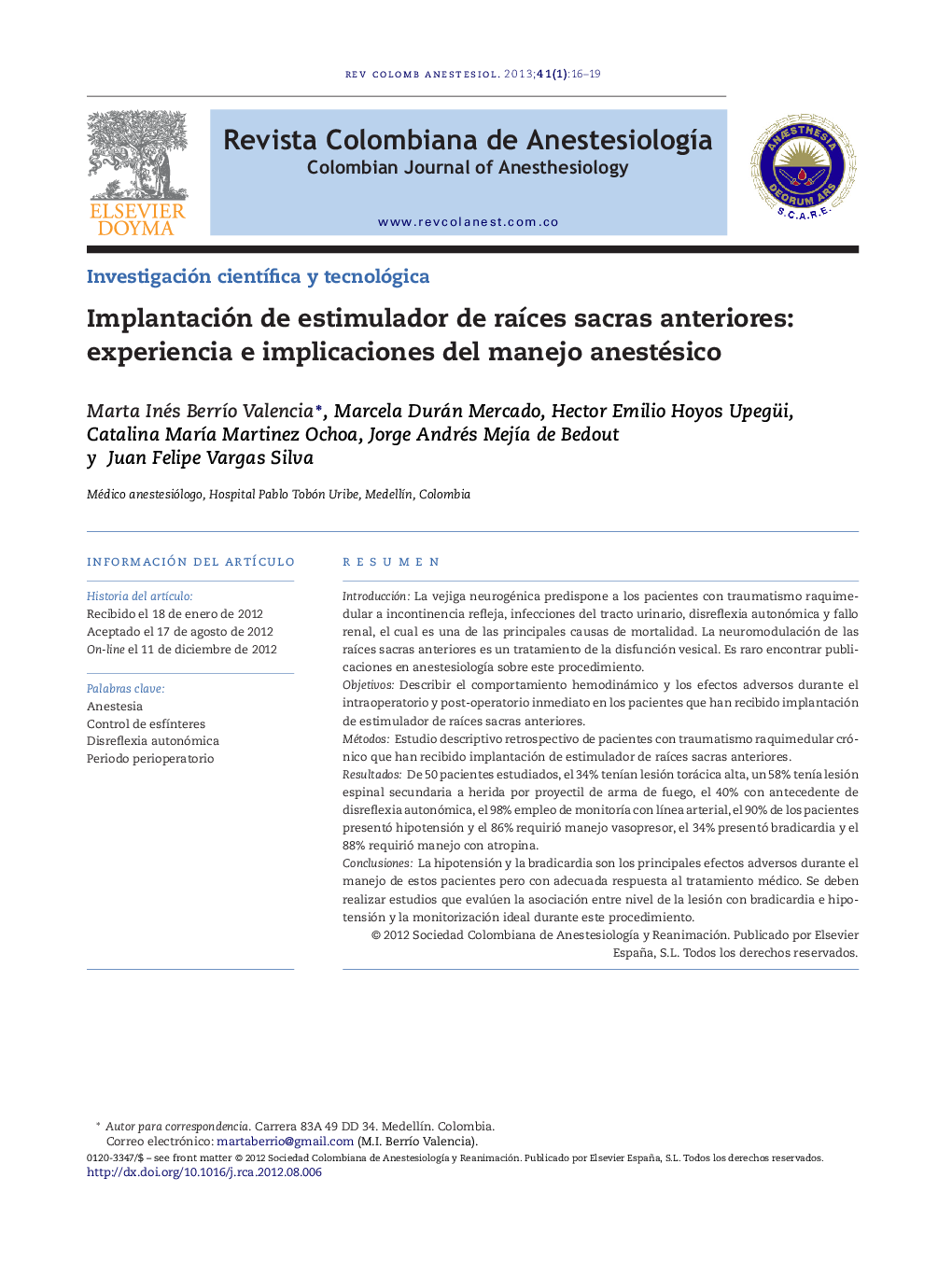| کد مقاله | کد نشریه | سال انتشار | مقاله انگلیسی | نسخه تمام متن |
|---|---|---|---|---|
| 2767706 | 1151210 | 2013 | 4 صفحه PDF | دانلود رایگان |

ResumenIntroducciónLa vejiga neurogénica predispone a los pacientes con traumatismo raquimedular a incontinencia refleja, infecciones del tracto urinario, disreflexia autonómica y fallo renal, el cual es una de las principales causas de mortalidad. La neuromodulación de las raíces sacras anteriores es un tratamiento de la disfunción vesical. Es raro encontrar publicaciones en anestesiología sobre este procedimiento.ObjetivosDescribir el comportamiento hemodinámico y los efectos adversos durante el intraoperatorio y post-operatorio inmediato en los pacientes que han recibido implantación de estimulador de raíces sacras anteriores.MétodosEstudio descriptivo retrospectivo de pacientes con traumatismo raquimedular crónico que han recibido implantación de estimulador de raíces sacras anteriores.ResultadosDe 50 pacientes estudiados, el 34% tenían lesión torácica alta, un 58% tenía lesión espinal secundaria a herida por proyectil de arma de fuego, el 40% con antecedente de disreflexia autonómica, el 98% empleo de monitoría con línea arterial, el 90% de los pacientes presentó hipotensión y el 86% requirió manejo vasopresor, el 34% presentó bradicardia y el 88% requirió manejo con atropina.ConclusionesLa hipotensión y la bradicardia son los principales efectos adversos durante el manejo de estos pacientes pero con adecuada respuesta al tratamiento médico. Se deben realizar estudios que evalúen la asociación entre nivel de la lesión con bradicardia e hipotensión y la monitorización ideal durante este procedimiento.
IntroductionNeurogenic bladder predispose to patients with spinal cord injuria to reflex incontinence, urinary tract infections, autonomic dysreflexia and renal failure, which is one of the key causes of mortality. Neuromodulation of the anterior sacral roots is a treatment for bladder dysfunction. The anesthesiology publications about this procedure are very rarely.ObjectivesTo describe the hemodynamic behavior and the adverse events during the intraoperative and immediate postoperative period of patients undergoing implantation of the sacral anterior roots stimulator.MethodsRetrospective, descriptive study of series of cases of patients with chronic spinal cord trauma implanted with the anterior sacral roots stimulator.ResultsOut of 50 patients studied, 34% had an upper chest injury, 58% had a spinal injury secondary to a fire weapon bullet, 40% had a history of autonomic dysreflexia, 98% were had arterial line monitoring, 90% of the patients were hypotensive and 86% required vasopres- sors; 34% experienced bradycardia and 88% required atropine management.ConclusionsHypotension and bradycardia are the major adverse events in the management of these patients, but they exhibit adequate response to medical treatment. Studies are needed to assess the association between the level of the injury versus the presence of bradycardia and hypotension and the ideal monitoring during the procedure.
Journal: Revista Colombiana de Anestesiología - Volume 41, Issue 1, January–March 2013, Pages 16–19